12. Oktober 2023
“Something exciting is brewing”: Japanese Studies Scholar Gergely Tóth on untold stories in the MAK exhibition „THE 1873 VIENNA WORLD’S FAIR REVISITED“
The Japanese Studies Scholar Gergely Tóth has been enthused by the MAK exhibition THE 1873 VIENNA WORLD’S FAIR REVISITED: Egypt and Japan as Europe’s “Orient”. His research focus lies on the Hungarian perceptions of Japan during the era of the Austro-Hungarian Monarchy. In this blog post he shares his reflections upon the reevaluation of the (hyper-exoticized) image of Japan and the cultural significance of the 1873 Vienna World’s Fair.
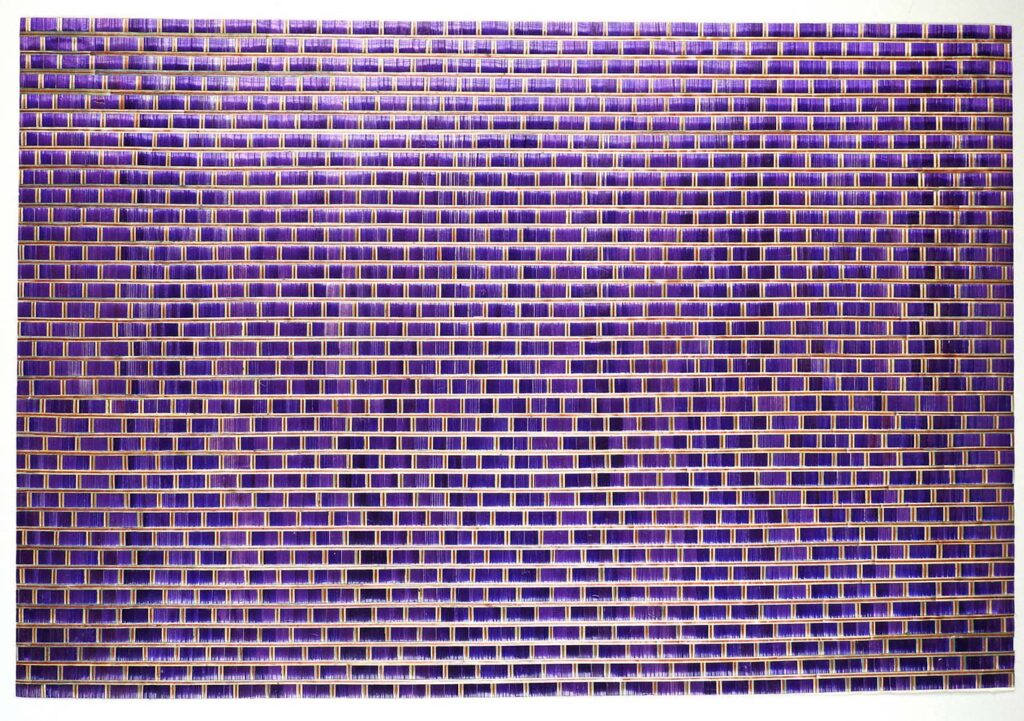
Straw marquetry, Japan, before 1872
© MAK
Something exciting is brewing over the past few years in Vienna concerning the critical reevaluation of (Central-Eastern) European-Japanese relations and the perceptions about Japan. As a Japanese Studies Scholar based in Hungary, a short trip from Budapest to Vienna offers a breath of fresh air, a welcome departure from an intellectually lackluster discourse on Japan within the oxygen-deprived echo chamber of Japan-related Hungarian academia and common thinking.
While Hungary has little to offer in terms of reevaluating its own skewed, Eurocentric discourses about Japan, in recent years, Vienna’s museums have consistently ignited significant intellectual sparks, visible even through the tinted glass of the dullest Hungarian Japan-related echo chambers.
Local and international audiences in Vienna have had numerous opportunities to immerse themselves in profound, meaningful Japan-related exhibitions, providing ample chances to reflect on, think about, and reevaluate the often hyper-exoticized and hyper-mysticized image of Japan deeply rooted in their minds. To mention just a few relevant shows from recent years, there was the opening of the MAK’s Asia Collection Room designed by Japanese architect Tadashi Kawamata (2014), the exhibition Japan Unlimited, held in 2019 in Vienna at Q21/MuseumsQuartier, and Everything You’ve Ever Wanted Is on the Other Side of the Planet, held in Vienna in 2020 at Angewandte Innovation Lab/Franz Josefs Kai 3, curated by Ms. Hitomi Hasegawa. This ongoing pursuit of reevaluation, demystification, objectivation, and genuine self-reflection is indeed quite commendable and shines through in these important exhibitions.
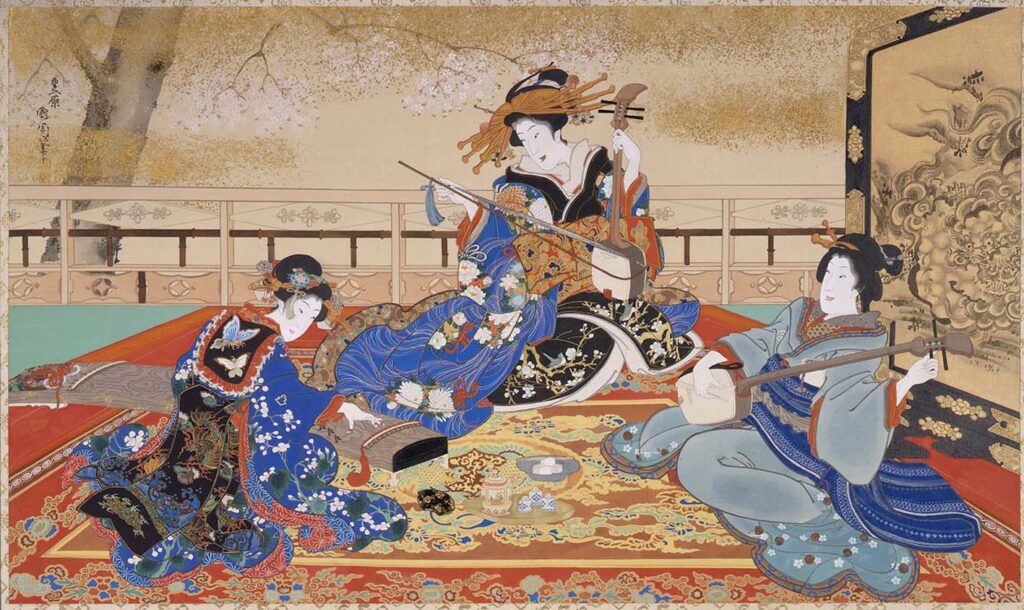
TOYOHARA Kunichika, Three courtesans playing music, Japan, before 1872, ink and color painting on silk
© MAK/Georg Mayer
The latest addition to this series of exhibitions is the ongoing THE 1873 VIENNA WORLD’S FAIR REVISITED: Egypt and Japan as Europe’s “Orient”.
While relatively small in size, it provides opportunities for discussions on the origins and untold stories of certain objects, contemporary views of Japan and the Japanese, and the formation of a country’s image.
As a Japanese Studies scholar, I am exclusively focusing on the Japan side of the exhibition. I have chosen not to address the Egypt part due to my lack of expertise in that area.
As I am primarily interested in Hungarian perceptions of Japan during the era of the Austro-Hungarian Monarchy, my excitement soared when I came across news of this exhibition. (You can find more details on this topic in my unpublished work, „Polygraphing Hungarian Perceptions of Japan in a Global Context“, excerpted here.)
Japan, as the „Orient Other“, occupies a fascinating position in (Central Eastern) European discourse. What makes it particularly intriguing is its intermittent inclusion and exclusion from this discourse, a contrast that becomes especially evident when compared to Egypt.
Remembering the 1873 Vienna World’s Fair is crucial for several reasons. It significantly influenced the MAK Collection (formerly the Imperial Royal Austrian Museum of Art and Industry) and had a notable impact on Hungary within the Monarchy. This era also marked the establishment of Japanese collections in Hungary.
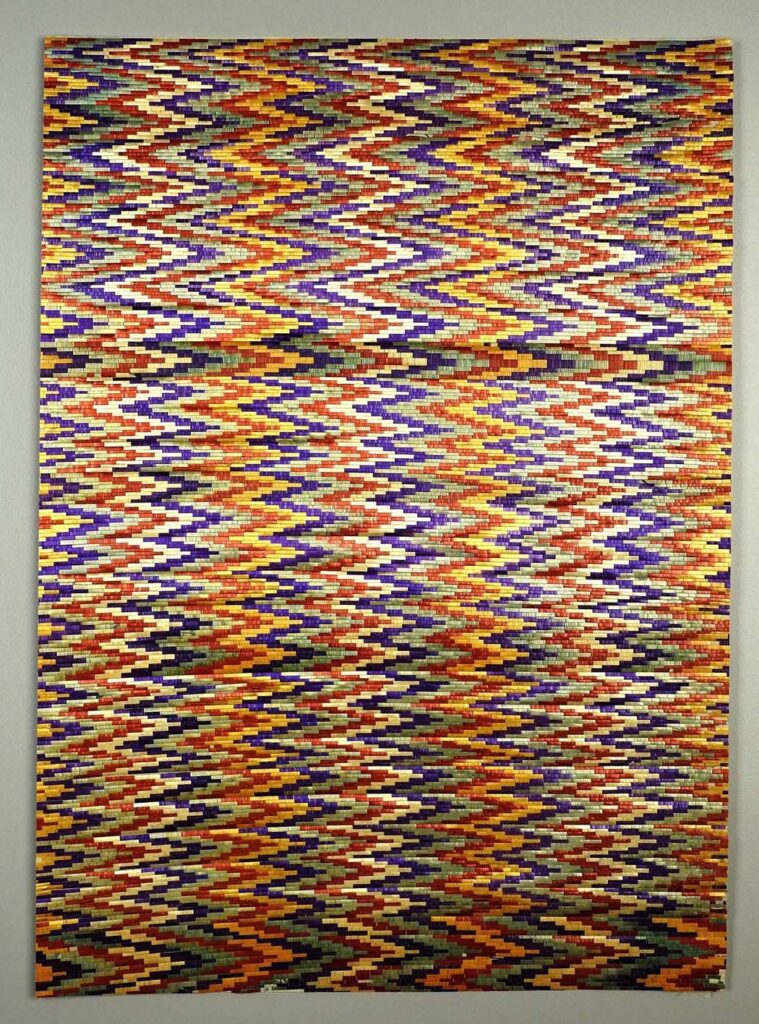
Straw marquetry, Japan, before 1872
© MAK
The exhibition tackles several enduring questions, such as the identities of those behind Japan’s pavilions, the political and cultural influences shaping aesthetics, and how participating countries presented themselves at the Vienna World’s Fair. However, the central focus is on Orientalism. The MAK’s viewpoint sees Orientalism as a complex interplay involving dynamic negotiations, elements of resistance and complicity, as well as self-othering or self-orientalization—a captivating phenomenon the exhibition thoroughly delves into.
As one enters the exhibition, there is a round centerpiece with (probably intentionally) randomly selected Japanese art pieces, each having a story linked to the 1873 Vienna World’s Fair. The most eye-catching piece is a beautiful bookstand in pristine condition, with gold and maki-e decoration on a black lacquer surface. This piece was acquired during the Vienna World’s fair; however, one is not provided with the full story behind it, unfortunately. Another great piece is a black lacquer cabinet with gold and maki-e decoration from 1873, in very good condition, and a wooden desk adorned with gold and maki-e decoration, displayed alongside vases, wall panels, an étagère, and more, all presented on rounded „Oriental Red“ podiums.
- MAK Exhibition View, 2023 THE 1873 VIENNA WORLD’S FAIR REVISITED. Egypt and Japan as Europe’s “Orient” Central Room, MAK Design Lab © MAK/Georg Mayer
- MAK Exhibition View, 2023 THE 1873 VIENNA WORLD’S FAIR REVISITED. Egypt and Japan as Europe’s “Orient” Central Room, MAK Design Lab © MAK/Georg Mayer
A quick check of the Made in Japan. Aus den Sammlungen des Museums für Völkerkunde exhibition catalogue from 2009 at the former Museum für Völkerkunde (today’s Weltmuseum Wien) shows that similar golden maki-e wooden desks were not on display during that event, which also marked the 140th Anniversary of Austria-Japan Relations. If my assumption is correct, this exhibition might provide a rare opportunity to view them. Furthermore, some photographs by Raimund von Stillfried, certain wooden lattices and most of the straw wickerwork are being displayed for the very first time.
As one gazes at the centerpiece podest filled with various Japanese artifacts, each accompanied by only a brief description, it evokes a sense of wonder akin to what visitors of the 1873 Vienna World’s Fair might have experienced in the Japanese section. It harkens back to the feeling of being a curious observer, reminiscent of the „badauderie“, (a French term for the behavior of idle onlookers), as well as the joy of discovering „trouvailles“, (hidden gems), in a display of „exotic Oriental“ pieces that was popular in the curio shops of 19th-century London, Paris, and New York.
The wall texts effectively counterbalance and contextualize the feeling of being idle onlookers. They offer well-structured and to-the-point explanations, engaging visitors with a comprehensive interdisciplinary context. In one of these accompanying texts, the curator sets the aim of the exhibition: „The MAK sets out to explore a critical aspect of this internationally prestigious show: the Orient as a construct of 19th-century Orientalism“. Rest assured, this exhibition is in good hands. The curator, Ms. Mio Wakita, has previously explored critical issues in Meiji souvenir photography, adding nuance to the simplistic „male West vs. female East“ model of cross-cultural relations in her earlier project. Her previous project advanced our understanding of cultural consumption toward a more nuanced perspective – and the same can be expected from this current exhibition too.
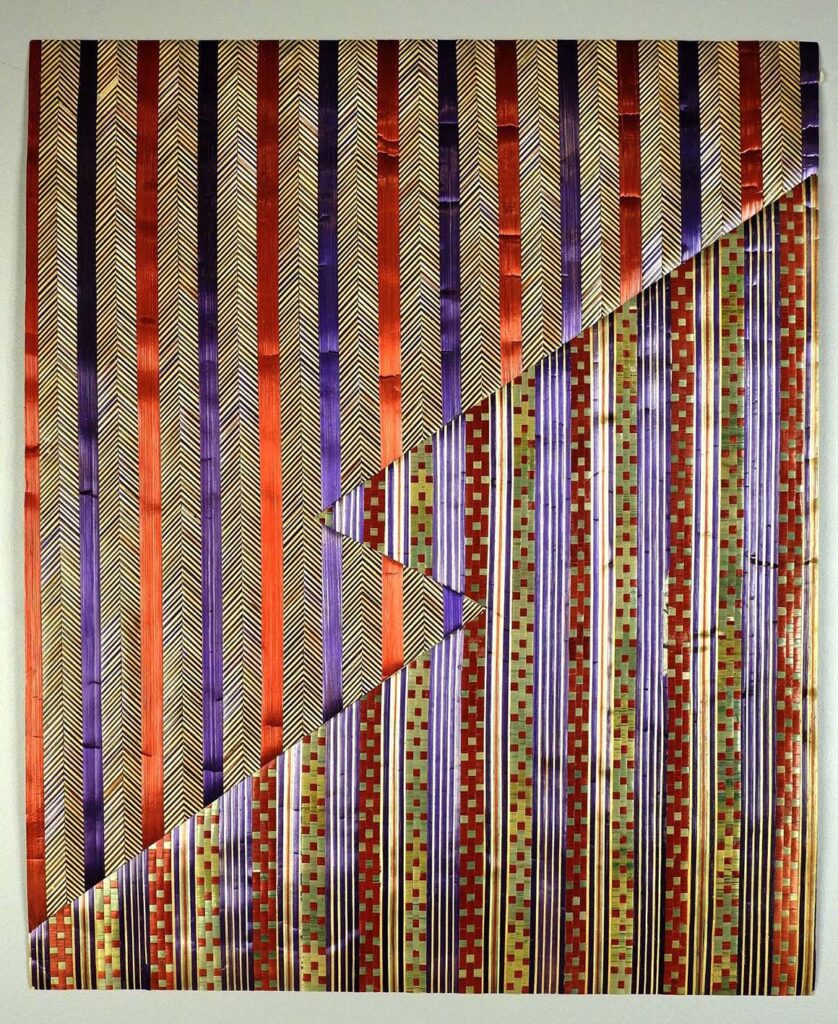
Straw marquetry, Japan, before 1872
© MAK
It’s fascinating to encounter the individuals involved in the Fair’s organization. Visitors will meet a German chemist who played a crucial role in advising the Japanese commission and shaping Japan’s contribution to the fair. Another exhibition highlight includes exceptionally unique colored and painted straw marquetry samples from Tokyo’s Omori district, likely unseen elsewhere.
Many of these objects are on public display as a set after more than a century, making this exhibition a must-see for Japanese Studies scholars and researchers dealing with Japan in the region. It’s an excellent opportunity to provide insights into the complexity of the perception of the „Other“ and its relation the “Self“. The exhibition offers recurring curatorial tours, and a comprehensive catalog is in the works. Vienna continues to impress, offering exceptional intellectual experiences for conscious tourists and locals alike.
A contribution by Gergely Tóth, Independent Japanese Studies Scholar, based in Hungary https://independent.academia.edu/japanmagyarkapcsolattortenet
The MAK exhibition THE 1873 VIENNA WORLD’S FAIR REVISITED: Egypt and Japan as Europe’s “Orient” is on view until 22 October, 2023
A recording of the symposium 150 Years After. The 1873 First Art History Congress, the Vienna World’s Fair, and the Museums, that took place on 6 October in the MAK, will be available shortly on the youtube channel of the MAK.
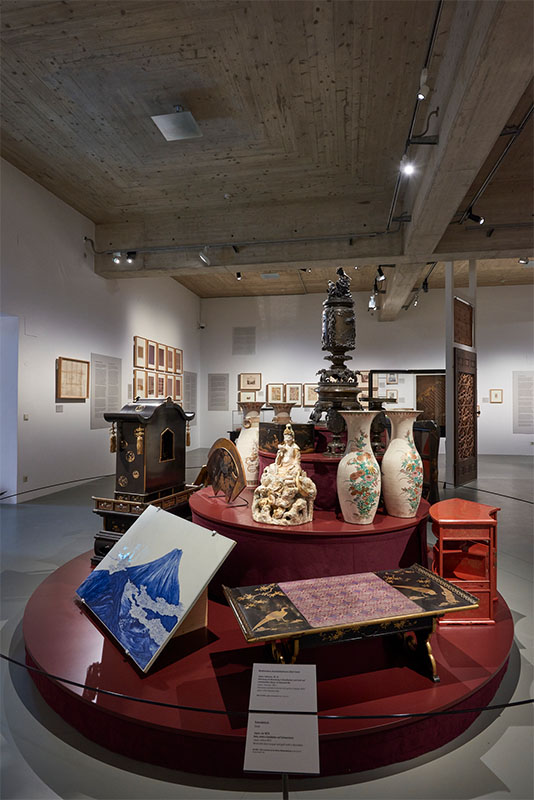
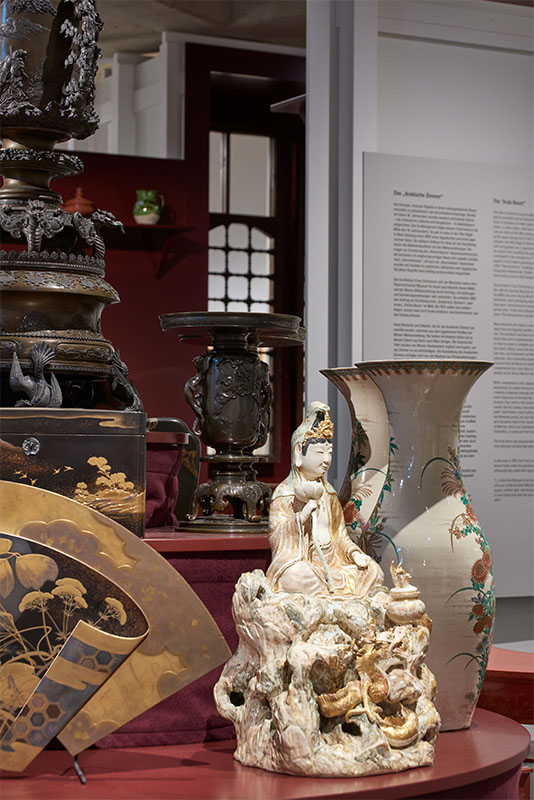





To get my point across, please have fun and do things you enjoy when you have free time. One of these things is Foodle.